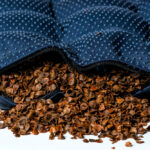Study techniques are nothing more than tools that lead us to a better understanding of the information. There is a wide range of study techniques in order to choose the one that best suits the information we want to fix with the content of the same, but also, in turn, with our style of study.
That is to say, the same technique will not be assimilated by two different people since a series of factors converge within it. For this reason, in this article, we will give you several essay writer free online options of techniques that will make your life easier when studying; you just need to try several and get the one that best suits you.
Prepare the right environment
Before we get into the subject and start talking about the recommended study techniques, you must take into consideration, first of all, the environment in which you are going to study; that is, you can have the best technique, but if the environment is not conducive this technique will not work.
If the environment is inadequate, you will go from technique to technique, wondering what happened, and we assign all the blame to it when what may really be failing in the environment you chose to study.
If you look closely, each function enjoys a suitable environment, i.e., for example, when you visit a library, you will notice that the quietest area is the study area. And the staff will constantly be going around the place to make sure that the rules are being followed, the most important of which is to be quiet.
All this has a reason, to cite another example, restaurants are now mostly joining the idea of requiring their customers (diners) to turn off their cell phones. This is so that they can connect to what it means to eat and share without any distracting factor that may prevent them from doing so.
Likewise, the study area should be a silent area in order to connect to knowledge with as little interruption as possible. However, today it is clear that life is much more hectic than before, with many more obstacles and more external distracting factors.
What can we do about this?
Find as much as possible our favorable environment or build it. That is, discover the elements that we have for a favorable environment for study, and condition it to our measure. You should consider three fundamental elements: space, timetable, and climate.
Space
The first thing you should take into account is what will be your study area from now on; no matter how small it is, your brain will begin to identify it as the place where you process knowledge. In the same way, it identifies your resting area.
In this way, once you are there, your brain will automatically begin to work in favor of concentration and even the pleasure that knowledge deserves. And without consciously perceiving it, your body will be ready to start the study routine.
Schedule
The timetable is fundamental at the time of studying, as well as the timetable for eating and the timetable for sleeping. If you notice, when we are close to lunch, our stomach is preparing its stomach for the whole digestive process, and if you do not eat at that certain time, you will realize that your stomach will begin to fatigue and will ask for food.
The same thing will happen if you schedule a fixed time to study. In the beginning, it will not be easy training, surely, you will be distracted the first days, but you will see that with the days, your mind will begin to be conditioned for this cognitive process.
Climate
The climate, environment, atmosphere, or whatever you prefer to call it, corresponds to how you want to condition that small study place, it can be something warm, full of your books or with your favorite books, with an agenda always at hand to take note of any important matter and if it is a tidy and clean place, it will become your little oasis for study.
The best study techniques
Now, having examined the above points, we can move on to explore all the best-known study techniques so far. However, many of these are falling into disuse due to the use of technology.
Underlining
As its name suggests, it consists of underlining the most important information in the paragraph. With this technique, you will not only be able to have a clear idea of which points are the most important, but it will also help you to fix information much better.
Rules for successful underlining
- Read each paragraph carefully
- Separate the main ideas from the secondary ones
- Underline them with a highlighter
- If you consider it necessary, you can make ancillary annotations in each part of the paragraph.
Making notes
The technique of making notes does not work for everyone since they consider that this takes a lot of time, but if it is a technique that works for you, do it. This consists of summarizing the information we have obtained and thus determining if we have assimilated the information well.
You can do it the classic way, with pencil and paper, or with online applications.
Rules for successful note-taking
- Do it in two ways, immediately when you have just left the subject, and once a reasonable time has passed, you will notice that your brain will give you different and equally valuable answers.
- When you make notes once you have just finished studying, your brain will give you the most salient points.
- And when a reasonable amount of time has passed, it will give you those points that deserve more time in your brain to be processed.
Summary
It is a classic but effective technique, and it works hand in hand with underlining since when you underline, you know what the most relevant information of a respective topic is.
Rules for successful summarizing:
- Extract the most relevant.
- Do not repeat the information. Otherwise, you are not summarizing but simply copying the information again.
- Help yourself with the underlining technique.
Mind maps
Mind mapping is part of the creative study techniques. These techniques work with the right hemisphere of the brain, which is known as lateral or divergent thinking. They are related to creativity and imagination, making it a fun and flexible method in which you will have more freedom when graphing the information.
Rules for making a mind map:
- Be prepared to be flexible
- Give free rein to your imagination, however witty it may seem.
- Use images, drawings, and bright colors.
Concept maps
Unlike the mind map, the concept map is a much more rigid study technique but very effective, depending on the type of information you want to represent.
In this, you will have to collect the information and structure it in the form of conceptual schemes. You should have a clear and hierarchical structure the right way, and the information must be well understood.
Rules for a successful concept map:
- It must color concrete points.
- You will not be able to place very long texts because you will not be using well the function of the card.
- You can use colors, images, or signs to remember.
Solving case studies
A very functional technique for all those careers related to numbers. However, it is also widely used for law, where hypothetical solving cases will put into operation all the knowledge in the corresponding area.
In addition, it provides more skills to law students since it will put into practice all the technicalities and legal vocabulary, helping them to exercise their skills much more.
Rules for this study technique
- Be clear about the hypothetical case to be solved
- Have all the implements at hand, for example, if it is a subject corresponding to numbers, the calculator, but if it is about law, you must have the laws at hand.
- Set a time-lapse to solve it, which will give the order brain the ability to solve it in the shortest time possible. If you don’t succeed, don’t worry. Practice it again.
Brainstorming
Brainstorming is one of the creative study techniques, widely used not only in the area of studies but also highly valued in the area of business, in companies, or when you want to achieve a change in an organization.
Since this works with a nourishing collection of ideas that will allow us to obtain more knowledge about a specific area and, at the same time, will put to work the divergent part of our brain.
It has been proven that when we reconnect with our creative part from when we were children, our brain gains flexibility, which allows us to solve issues or problems that we would not regularly solve with the rational part of our brain, i.e., the left hemisphere.
However, this technique has a disadvantage compared to the others since you cannot do it alone. You definitely have to get together with other colleagues who are willing to do it with you, which requires planning and time.
Rules for brainstorming
- Get together with other fellow students
- The group should have a moderator
- A point should be proposed
- There are small time slots for brainstorming.
- Once you have all the possible ideas according to the planning, you will start to discard some and keep the ones you like the most.
Mozart Effect
Although listening to classical music is not a study technique, it is a good option for concentration. Although there are no conclusive scientific studies that credit Mozart’s music with the ability to develop the cognitive part of the brain, what has been recognized so far is that it improves concentration and increases short-term memory capacity.
In addition to lowering stress levels, which facilitates concentration, this is because classical music has a tempo of 60-80 bpm, that is, the duration of each musical note, which favors the performance of the heart rate, lowering blood pressure as a relaxation response.
Therefore, it is also recommended to other classical authors to whom the same attributes are attributed, such as Beethoven, Vivaldi, or Tchaikovsky among other authors.
Conclusion
The study techniques, as we could observe, are of great help in this way of learning, but they converge at the same time with a series of fundamental elements for it to be successful.
On their own, it would be useless to apply them; they interact with fundamental external elements to fulfill their objectives. For example, imagine yourself in a noisy environment trying to make a concept map, you might succeed, but you would definitely take longer if you did it in a suitable environment.
Whether they are rational or creative techniques, both need their space. Remember, no matter how small your study area is, try to make this small space your oasis, and you will see that ideas will emerge and techniques will become your best allies.
Remember to try as many techniques as you want. You will surely find the one that suits you best, but, if you dare to try both rational and creative techniques, you will be making the best choice because you will put to work both hemispheres of your brain, the left hemisphere rational, convergent; and the right hemisphere, creative, flexible and divergent.












essaytyper
December 27, 2022I was suggested this website via my cousin.
I’m not sure whether or not this submit is written by way
of him as nobody else recognize such distinct approximately my difficulty.
You’re amazing! Thanks!